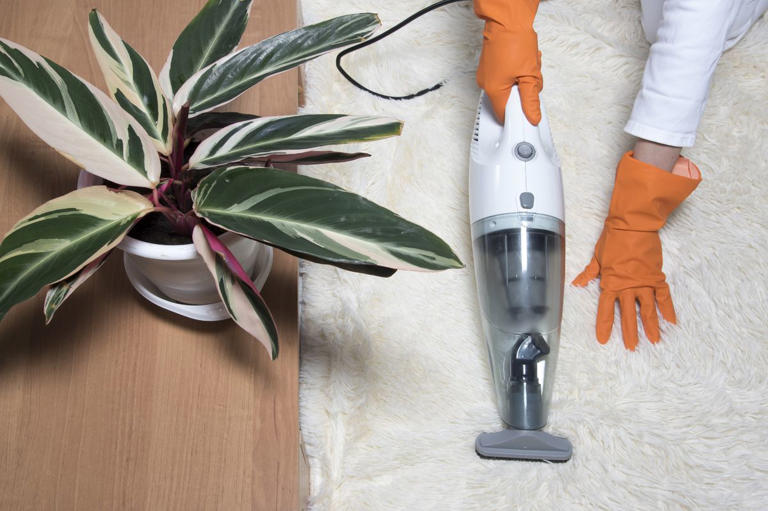SandNiggerKANG
تعالى أدلعك
-
- Joined
- Aug 18, 2023
- Posts
- 8,334
You may have been taught to use distilled white vinegar to wash your windows or bicarbonate of soda to clean burnt-on food from pans, but when it comes to household advice, we imagine it's less likely you were taught how to deal with this stain.
As with all stains, the sooner you tackle semen stains, the better the chance of getting them out. Here's how to remove semen stains from your bedsheets, clothes and carpet.
Cleaning products that contain enzymes can help break down proteins, which is why they’re an ideal solution for semen stains. But care must be taken here because protein-based fibres, including silk and wool, can be damaged in the process, too. Only use enzyme-based products (they'll be listed in the ingredients) on suitable fabrics and test in an inconspicuous area first.
If the stains are old or dried-on, and on any fabric other than silk or wool, remove any dry matter first with a soft brush, then steep in an enzyme-based pre-soaking agent before laundering as normal, preferably with a biological washing detergent.


gettyimages-1194628093© Suphansa Subruayying - Getty Images
Whichever detergent you use, make sure it’s suitable for soaking. A good example of one which would work here would be Woolite.


gettyimages-1297184719© Marina Troynich - Getty Images
A good quality mattress protector will help avoid this, but if a stain has seeped through the sheets onto the mattress, the area can be spot cleaned.
As with all stains, the sooner you tackle semen stains, the better the chance of getting them out. Here's how to remove semen stains from your bedsheets, clothes and carpet.
Why are semen stains difficult to remove?
Semen is a protein-based stain, much like blood and egg. While these kinds of stains are generally simple to remove, they can become a problem if allowed to dry or set, which can happen even at low temperatures. That’s why it’s essential to stick to cold water when flushing this stain; hot water will likely set it and make the situation worse.Cleaning products that contain enzymes can help break down proteins, which is why they’re an ideal solution for semen stains. But care must be taken here because protein-based fibres, including silk and wool, can be damaged in the process, too. Only use enzyme-based products (they'll be listed in the ingredients) on suitable fabrics and test in an inconspicuous area first.
On washable fabrics
For most fabrics, washing immediately with a biological detergent will be enough to remove the semen and prevent staining. But, make sure you keep the cycle at 30 degrees or less to prevent setting the stain, as explained above. Alternatively, fresh stains are usually removed easily by rinsing with cold water.If the stains are old or dried-on, and on any fabric other than silk or wool, remove any dry matter first with a soft brush, then steep in an enzyme-based pre-soaking agent before laundering as normal, preferably with a biological washing detergent.

gettyimages-1194628093© Suphansa Subruayying - Getty Images
On silk and wool
For both new and old stains on silk and wool, the best course of action is to make up a solution of water with a detergent for delicates (check the label for dosage) and leave to soak before washing as normal.Whichever detergent you use, make sure it’s suitable for soaking. A good example of one which would work here would be Woolite.
On carpet
In most cases, semen stains on carpet should come out easily, but it’s best to act fast and clean the stain before it dries.- Sponge the affected area with a cool solution of water and a suitable detergent.
- Repeat using plain water to remove any detergent, then blot with dry paper towels to remove as much moisture as possible.
- Leave to dry naturally. If any powdery, dry matter remains, use a soft brush to remove it and vacuum the area thoroughly.

gettyimages-1297184719© Marina Troynich - Getty Images
On mattresses
A mattress is a pretty big investment, so if semen does find its way onto yours, you'll want to deal with the problem as quickly as you can to avoid a long-term stain.A good quality mattress protector will help avoid this, but if a stain has seeped through the sheets onto the mattress, the area can be spot cleaned.
- Use a damp sponge or cloth to dab the stain with cold water, then spot clean with a stain remover for upholstery. Alternatively, a weak detergent solution can be used.
- Gently sponge with water to remove any detergent residues, but it’s important to avoid over-wetting the mattress.
- Blot dry as much as possible and allow to air dry completely before making the bed.
On upholstery
Upholstery fabrics are very varied and it’s best to follow manufacturer’s instructions on how to clean stains from your sofa or chairs.- As a general rule, use cold water and blot the stain gently.
- If the stain doesn’t shift, use a weak detergent solution or an upholstery cleaning spray but always test on an inconspicuous area first to check for colour fastness.
- Avoid over-wetting upholstery as you remove any detergent and blot dry to remove as much moisture as possible.





